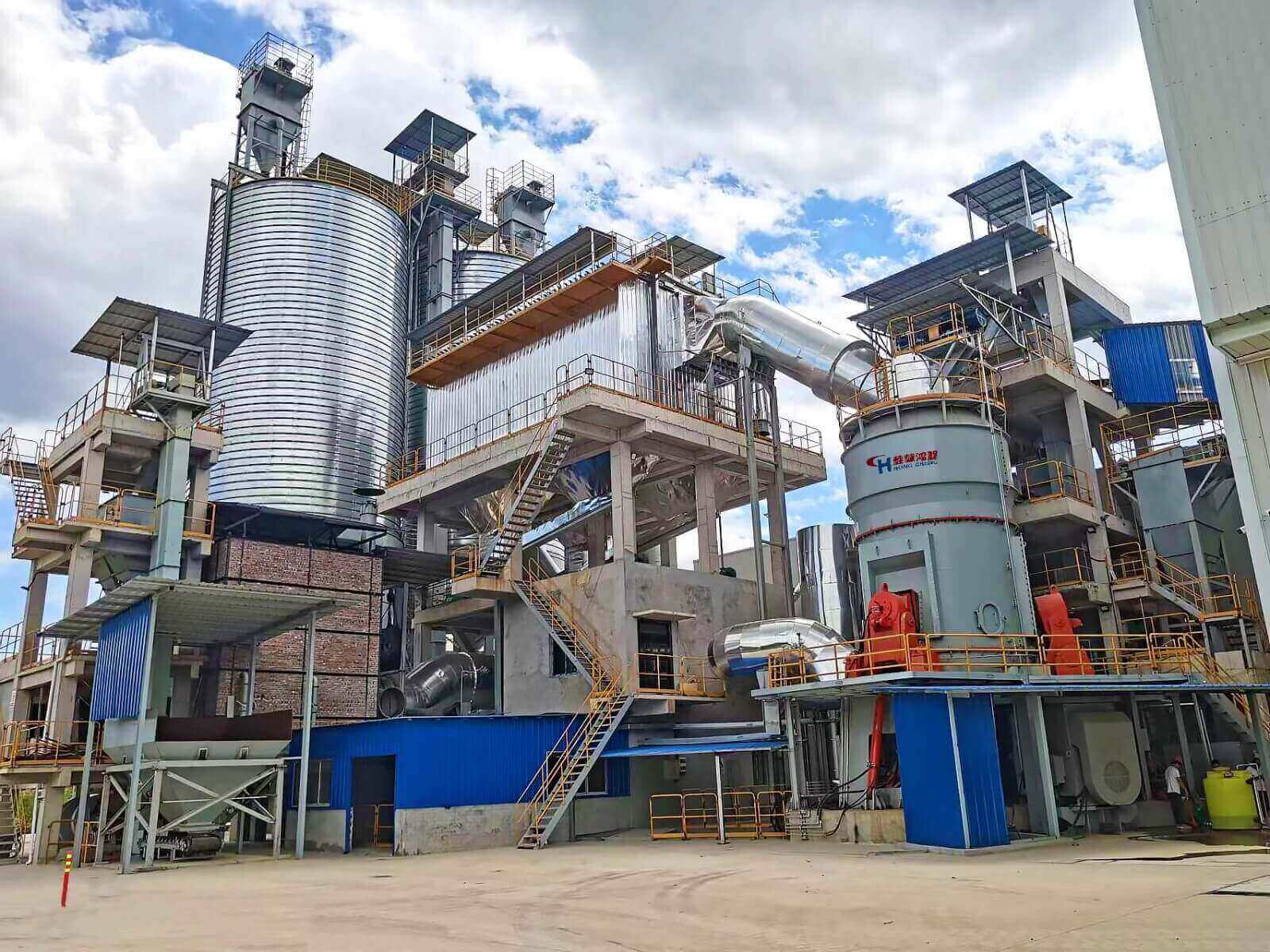The solid waste generated by iron and steel enterprises during the production process mainly includes steel slag, blast furnace slag (including water slag, dry slag), iron-containing dust sludge, desulfurization ash, power plant fly ash, waste refractory materials and industrial waste. The utilization of solid waste in steel plants involves many fields such as machinery and equipment, resources, and the environment. As a manufacturer of steel plant vertical mills, Guilin Hongcheng's HLM series of steel plant vertical grinding mills provide good equipment assistance for the comprehensive utilization of solid waste in steel plants. Today I would like to introduce to you the current situation of solid waste utilization in steel plants.
The amount of steel slag produced per ton of steel is 100 to 150 kg, which mainly includes three types: converter steel slag, electric furnace steel slag and open hearth steel slag. There are two main ways to comprehensively utilize steel slag as a secondary resource. One is to be recycled in steel plants as a smelting solvent; the other is to be used as a raw material for road construction materials, construction materials or agricultural fertilizers. The high content of f-CaO in steel slag is the main cause of cracking in steel slag structures. Therefore, to improve the utilization rate of steel slag, we should first reduce the f-CaO content in steel slag. To this end, metallurgical workers have developed a series of primary treatment technologies for steel slag, which mainly include steel slag atmospheric pressure pool-type hot and stuffy treatment technology, molten steel slag tank-type pressurized hot stuffing treatment technology, cold steel slag steam aging technology, hot splash technology, and drum Granulation technology and air quenching technology. It can be seen that the pressurized hot stuffing process technology has strong applicability and short processing time. It has advantages in automation, processing effect, environmental emissions, resource utilization, waste heat utilization and other aspects.
In modern blast furnace ironmaking production, blast furnace slag is mainly processed by hydraulic slag washing. Most blast furnace slag is processed into water slag by water quenching process. Water slag has potential hydraulic gelling properties and can be used as high-quality cement raw materials to make slag Portland cement, gypsum slag cement, lime slag cement, etc. During water quenching, one is to directly water quench the slag; the other is to mechanically crush the slag and then water quench it. The main processing techniques include Inba method, disc method, Tula method, etc.
Iron-containing dust sludge mainly includes sintering sludge, blast furnace gas ash (mud), converter sludge, electric (converter) furnace dust ash, steel rolling iron oxide scale, taphouse dust collection, etc. In the traditional blast furnace-converter steel production process, the total production of iron-containing dust and sludge is generally 10% to 15% of steel production. Among them, the dust output in the sintering process accounts for 3% to 4% of the sinter output, the dust (mud) output in the ironmaking process accounts for 3% to 4% of the molten iron output, and the dust and mud output in the steelmaking process accounts for about 3% of the steel output. 2% ~ 3%. Therefore, iron-containing dust sludge needs to be treated before it can be recycled properly in steel plants. The treatment methods mainly include rotary kiln technology and rotary hearth furnace technology.
Desulfurization ash is a kind of solid waste produced during the flue gas purification process, mainly including wet desulfurization ash and dry desulfurization ash. The main component of wet desulfurization ash is calcium sulfate dihydrate (CaSO4·2H2O), with a content of nearly 90%. Wet desulfurization gypsum is mainly used in the fields of cement retarder, cementitious materials, soil conditioner, and construction gypsum preparation. The sulfur-containing mineral component of dry desulfurization ash is calcium sulfite (CaSO3·0. 5H2O), which is a high-calcium and high-sulfur mixture. The presence of CaSO3·0.5H2O in dry desulfurization ash and the instability of its content make desulfurization ash extremely unstable, which seriously affects its resource utilization in cement, construction and agriculture. At present, comprehensive utilization is difficult. Only a small part is used for backfilling or paving in mines, and most of it is still piled up.

Steel Slag Solid Waste Vertical Grinding Mill, welcome to leave a message or consult [email protected]
At present, blast furnace slag is still the main solid waste utilization rate in steel plants. As a high-quality cement raw material, blast furnace slag can produce high value-added products with certain economic value, such as slag wool, crystallized glass, refractory materials, etc. Followed by steel slag. The utilization of solid waste in steel plants is inseparable from the help of grinding equipment. The HLM steel slag mill vertical grinding mill produced by Guilin Hongcheng has rich customer cases and successful operation experience for slag and steel slag grinding. If you have relevant needs, please leave us a message to learn more about the equipment details.